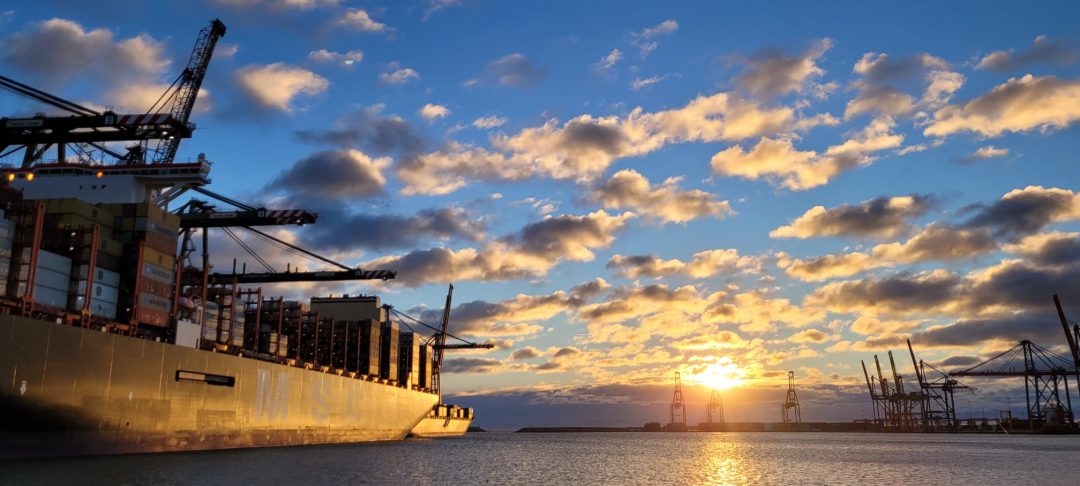Valenciaport, as a thermometer of economic activity and world trade, reflects in its 2022 data the international crisis that is affecting the business situation and the global exchange of goods, which is facing a complex situation marked by the war in Ukraine, increased neo-protectionism, high inflation and the rise in fuel and raw material prices. Despite the fall in total traffic (-6.92%) and container traffic (-9.85%) during the previous year, Valenciaport maintains its share of 40% of import/export traffic in the Spanish port system, as in previous years. The year closed with an increase in the number of cars handled, which rose by 22.25%, and passengers, both on regular lines (+48.67%) and cruise passengers (+376%).
Thus, according to data from the Statistical Bulletin of the Port Authority of Valencia (PAV), a total of 79,365,321 tonnes of goods were handled in 2022, representing a decrease of 6.92%, while TEUs amounted to 5,052,272 with a fall of 9.85% – in line with the indications of the SeaIntelligence consultancy of a drop in world traffic of around 10%. A decrease in containers that occurs mainly in transit containers with a drop of 416,137 units, 16.81% in relative terms with respect to the 2021 financial year. They went from 2,475,802 in 2021 to 2,059,665 last year, traffic that has been diverted to other Mediterranean ports. Regarding full cargo containers (export), which reached almost one million, there was a decrease of 82,032 containers, -7.59% less than in 2021. And full unloading containers (import) have grown by 1.55% to 850,589 units. Empty containers fell by 5.54% in 2022.
About the type of goods, the current situation is a clear reflection of Valenciaport’s traffic and the change in the arrival/departure of products. Thus, liquid bulk has mobilised 5,818,821 tonnes (+50.44%), highlighting the natural gas that has been managed through the Port of Sagunto, which has doubled in 2022 compared to 2021 to reach 4,118,575 tonnes. In fact, the number of ships dedicated to the transport of products such as energy products was 322, 10.65% more than the previous year. The United States accounts for half of all natural gas imports. Solid bulk cargoes exceeded 2,255,164 tonnes, up 4.45%, with an increase of 12.14% in cereals and their flours. Non-containerised cargo maintained the 2021 quota with 14,763,010 tonnes, while the decrease occurred in containerised cargo with 56,125,555 tonnes, 12.33% less.
In general, traffic has decreased in all sectors. Iron and steel fell by 9.85%, construction materials by 12.61% and chemical products by 9.99%. The agri-food sector maintains in 2022 the figures of 2021, with a decrease of 0.47%. The sectors that increased are energy (+63.5%), other goods (+2.39%) with wood and cork (+12.95%) and vehicles and transport elements (+1.36%) standing out.
About automobile traffic, during 2022 it should be noted that 603,566 units were handled at the València and Sagunto docks, a 22.25% increase. In absolute figures, 109,869 more vehicles were handled than in 2021. This vehicle traffic is mainly with Italy, Belgium and Turkey, which account for 50% of operations. In terms of ro-ro traffic (a system whereby a vessel transports cargo on wheels), total traffic amounted to 12,946,088 tonnes, 0.64% more than in 2021.
The United States, Italy and China, the main partners
In terms of total traffic by country, according to the APV’s Statistical Bulletin, the United States generated the most traffic with a total of 8,433,368 tonnes and an increase of 9.43%. This is followed by Italy with 7,490,11 tonnes – a similar figure to 2021 – while China is in third place with a decrease of 12% and a total of 6,073,718 tonnes. The Asian giant occupies the first position in container traffic with 530,902 (-13.32%), followed by the United States with 487,828 (-8.18%) and Turkey with 250,731 (-21.29%).
The United Kingdom is the most dynamic country in 2022 with an increase of 34.16% in total goods and 25.14% in containers. Other countries that have grown in 2022 include Nigeria (+39.64%), Belgium (+34.11%) and the Netherlands (13%).

























